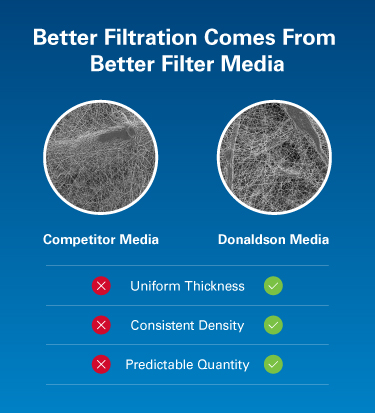

A combination of the globalization of markets and platforms, and the centralization of manufacturing in order to optimize the economies of scale has put logistics costs in the spotlight.
“The total inbound logistical cost of a finished car amounts to 10% of its total, compared to only 5% for the actual assembly costs,” says Rene Falch Olesen, chief commercial officer (CCO) of Danish transport and logistics company DSV A/S. “Furthermore, as a result of build-to-order concepts, increased model-mixes and reduced inventory, supply chain complexity has increased. This explains the automotive OEM’s focus on continuously improving their supply chain efficiency and control, while targeting reduced cost and improved quality. The aim of the game is to synchronize the entire supply chain from the supplier base to the assembly lines,” he says.
Costs can be taken out of the system once it is understood and properly controlled, says Falch Olesen. “For example, while one of our customers increased their production volumes, we worked with them to reduce takt (cycle) time by 20%, and the total cost of ownership by 25%. We also improved PPM levels to help our customer meet its target”. Savings are made by establishing parts consolidation centers located close to the OEM’s supplier base or assembly plants, offering multi-user warehouse operations, providing ready-to-fit assemblies, as well as kitting and just-in-time and/or just-in-sequence solutions.
Automotive Industries (AI) asked Falch Olesen, what services the company provides to OEMs and Tier 1 suppliers.
Falch Olesen: Having serviced the auto industry for over 20 years, we are recognized as a reliable partner with excellent financial strength, and a focus on customer service. We cover the entire supply chain, including inbound-to-manufacturing flows, sequence centers and after-market service parts operations. This includes everything from air and sea shipment to hand courier and charter services when required. Services include supplier collection and delivery, consolidation, line hauls from consolidation hub to OEM and/or Tier suppliers, reverse logistics, direct deliveries, milk run collection and deliveries, overnight spare-parts distribution, and emergency shipments across 34 European countries. Because of this experience, we understand the challenges of the automotive OEM on their path-to-market.
AI: What capabilities best reflect DSV’s leadership in the logistics and transport industry?
Falch Olesen: One important attribute that enables us to support the auto industry especially well is that we have an organization that is highly empowered at the local level, and which is able to make things happen very quickly. We also have a very flat organizational structure within each region, so key decisions required to help our customers are not delayed across levels of management and staff functions. The auto industry demands decisions very quickly. Our organization and culture support that very well.
Our proven expertise allows us to strategize and work with our customers, giving them the best solution for all their automotive supply chain requirements. DSV has an integrated team from the various divisions driving the business through the company. The current focus is on raising the levels of service we offer in inbound-to-manufacturing sequence support, as well as our service parts warehousing and distribution network.
We also adapt to the needs of the market. DSV has been known as a Top 3PL service provider, with a fully integrated global air/sea network, as well as a full pan European integrated road network.
AI: What recognition have you received from the industry?
Falch Olesen: In April 2011, General Motors recognized DSV as a 2010 “Supplier of the Year”. DSV transports components and parts for General Motors from Europe, Africa, and the Near
East to the production locations and spare parts centers in Europe (Germany, Austria, UK and Hungary), as well as locations in North America, Asia and Australia. The services for GM cover the whole chain of order management, supplier management, and the physical delivery process.
AI: How has the recent upheaval in global markets impacted your business?
Falch Olesen: The auto industry is still recovering from a very difficult business period (possibly the most difficult in its history). This has led to more and very rapid global sourcing and manufacturing, emphasis on inventory reduction, and new products being introduced on an almost constant basis.
Rapid global sourcing has required us to develop a supplier management and transport model that we can deploy quickly in virtually any country in the world. An example is Russia, where the market has recovered very quickly.
To support the inventory reductions, we not only have to ensure suppliers ship on time and carriers adhere to agreed transit times, but must also ensure all in-transit material movements are visible, and changes in delivery are communicated quickly. This allows the destination plant to ensure they have material available when it’s required. In support of new products, DSV has implemented a project planning methodology to support all phases of pre-build and system fill to ensure suppliers are “on-boarded” correctly, and new transport lanes and transit times are established.
AI: What are DSV’s future strategies for growing its automotive business?
Falch Olesen: DSV’s top priority is to support our current customers and continue to grow with them. One of the most important DSV developments is the further implementation of our global account organization. This global account organization consolidates the strengths of all three divisions – DSV Road, DSV Air & Sea, and DSV Solutions. We believe we bring a great deal of value to customers by providing a full service offering that delivers the best that all DSV divisions have to offer them.














More Stories
Automotive Industries Top Auto Shipping Companies, Ranked
Saxony amps up its commitment to automobility
Port of Koper – Adding value at Mediterranean port gateway